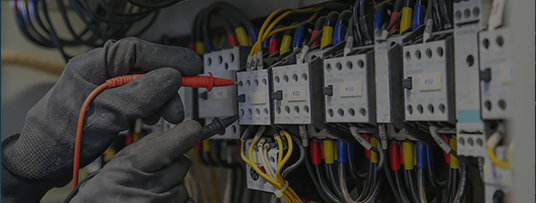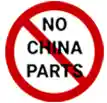Posted on November 20, 2023 frank botman Aerospace
Servo drives and motors play a crucial role in a wide variety of applications, ranging in use from manufacturing, robotics, aerospace, and automotive industries. These components are the driving force behind precise and controlled motion in machinery, providing them the capability to position objects accurately and efficiently. In this blog, we will delve into the world of servo drives and motors, exploring their key features, types, and applications.
Servo Drives and Motors: A Fundamental Pairing
Servo drives and motors form an inseparable partnership when it comes to motion control systems. The servo motor, whether rotary or linear, is responsible for converting electrical signals into mechanical motion, while the servo drive ensures the motor operates with the desired speed, accuracy, and precision. This combination allows high-performance positioning and velocity control.
Rotary Actuator: The Versatile Choice
One of the most common types of servo motors is a rotary actuator. These motors are designed to rotate, providing angular motion in various degrees. Rotary actuators can be further classified into two main categories: DC motors and AC motors.
DC motors, or direct current motors, are known for their simplicity and reliability. They are powered by a constant voltage and are often favored for their ability to maintain a stable speed and torque. This makes them ideal for applications where precise control of speed and position is essential, such as in robotics and CNC machines.
On the other hand, AC motors, or alternating current motors, are characterized by their ability to handle high-speed applications efficiently. They are widely used in industrial machinery, such as conveyor systems, where continuous and rapid motion is required. AC motors can be further classified into synchronous and asynchronous (induction) types, with each having its unique advantages.
Linear Actuator: The Straightforward Solution
While rotary actuators handle rotational motion, linear actuators are tailored to linear motion. They are indispensable in applications where objects need to move in a straight line with precision, and they are also available in both DC and AC motor variations.
DC linear actuators are often favored for their simplicity, just like their rotary counterparts. These actuators are used in various industries, from healthcare and agriculture to home automation. They are known for their quiet operation and ability to deliver accurate linear motion.
AC linear actuators, on the other hand, find their place in heavy-duty industrial applications. They are capable of handling significant loads and are commonly used in machinery where precise linear movement is essential, such as in assembly lines and material handling systems.
Applications of Servo Drives and Motors
Servo drives and motors find application in a multitude of industries. In manufacturing, they are used for CNC machining, 3D printing, and automated assembly lines, these components ensuring products are built with unparalleled accuracy and consistency.
The robotics industry also relies heavily on servo drives and motors to control the movements of robotic arms and other automated systems. This precision is essential in fields like medical robotics, where delicate surgeries are performed with robotic assistance.
Aerospace and automotive industries also harness the power of servo drives and motors for functions like steering control and precision positioning of aircraft components and vehicle parts. This enhances safety, efficiency, and overall performance, making such items beneficial for these applications.
Moreover, servo drives and motors are employed in the field of renewable energy, helping to optimize the tracking of solar panels and wind turbines to ensure they follow the sun's path or wind direction for maximum energy capture. As a last example, in entertainment, servo drives and motors are used in special effects and animatronics, bringing lifelike movement to characters and props in movies and theme parks.
Conclusion
Overall, servo drives and motors are a pivotal part of modern machinery, enabling precision, control, and accuracy in a vast array of applications. Understanding the various types of motors, whether rotary or linear, and their distinct advantages is essential for selecting the right components for your specific needs. As technology advances, these critical components will continue to evolve, further enhancing the capabilities and efficiency of motion control systems across diverse industries.
For your procurement requirements, we welcome you to explore our product range at your convenience and take advantage of our online Request for Quotation (RFQ) service for quick and straightforward price quotes. Once we receive and review your completed form, one of our team members will contact you within 15 minutes or less, offering a customized solution for your comparative assessment. Begin your procurement journey today and discover why numerous customers consistently opt for Find Automation Parts for their part fulfillment needs.

 The only independent
The only independent

 All Orders are Fulfilled in the U.S.A.
All Orders are Fulfilled in the U.S.A. All shipments must comply with U.S.A export laws.
All shipments must comply with U.S.A export laws. No exceptions.
No exceptions.

“We Proudly Support Intrepid Fallen Heroes Fund that serves United States Military Personal experiencing the Invisible Wounds of War : Traumatic Brain Injury (TBI) and Post Traumatic Stress (PTS). Please visit website (www.fallenheroesfund.org) and help in their valiant effort”.
We hope that you will visit us again the next time you need industrial parts and make us your strategic purchasing partner.
Request for Quote